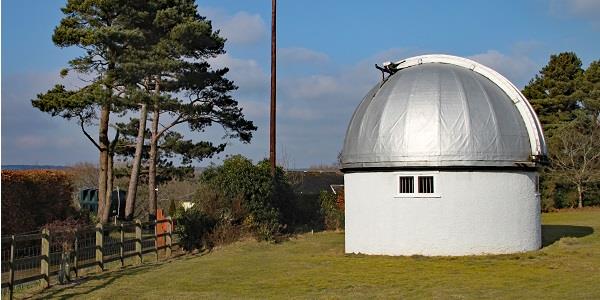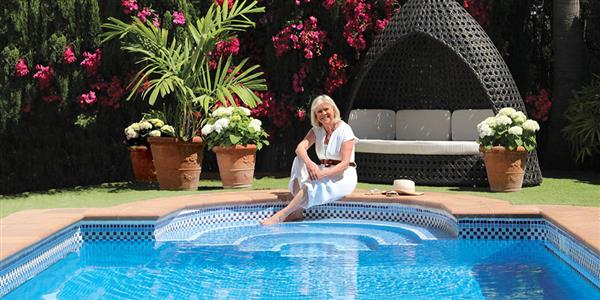
Stargazers and astronomers can enjoy a real treat during a stay at Lower Knapp Farm. Just a 15-minute trip in the car, via Seaton Road and the A3052, will take you to the historical Norman Lockyer Observatory. This is your chance to really get a closer look at the wonders of the night sky! The modest, yet fascinating, building has been part of Devon’s landscape for over a century and has long been a hub for amateur astronomy, meteorology, radio astronomy and science education.
Norman Lockyer was a Victorian amateur astronomer, best known for discovering the element helium in the sun’s corona. He was also one of the founders of the respected journal ‘Nature’. Later in life, Lockyer went on to become director of the Solar Physics Observatory in South Kensington, as well as the first professor of astronomical physics at the Normal School of Science (which was eventually renamed the Royal College of Science). He received a knighthood in 1987 and ultimately retired to Sidmouth, where he was granted permission to build the Hill Observatory in 1912. The observatory was renamed in Lockyer’s honour following his death in 1920.
Today, the Norman Lockyer Observatory Society is responsible for the upkeep and running of the observatory. The aim of the society is to provide members with access to equipment, help further public knowledge and to maintain and develop both the site and instruments found within.

The appeal of the observatory lies in the combination of modern and historical equipment found here. As part of this, the site houses several historic telescopes, including the Lockyer telescope. After being used by Lockyer to make his famous discoveries about the sun’s composition in 1868, this iconic telescope was moved into the observatory following his retirement. In addition, you can also view the Kensington telescope, originally built for the Solar Physic Observatory in London but moved to Sidmouth when the observatory opened in the early 20th Century. Finally, make sure to take a look through the McClean telescope, which was donated by Francis McClean in 1912.
The Norman Lockyer Observatory also contains the James Lockyer planetarium. Seating approximately 60 people, this was one of the first buildings to be commissioned by the society after they took over the site. In 2005, the original small projector was replaced by a larger, elaborate instrument donated by the Royal Observatory in Greenwich, creating a truly dazzling show. There are now regular presentations at the planetarium, where visitors can come and learn more about a range of topics, from constellations to historical figures and the planets themselves.
Visitors should also take a moment to admire the impressive 19th Century Orrery on display in the main foyer. Donated by Howard Anderson, a member of the British Sundial Society, the beautiful piece of equipment was restored by society members over 18 months, with help from the Cambridge Design partnership. This elegant mechanical model of the solar system shows the changing positions of the Sun, Earth, Moon and planets, as well as that of the major asteroids, allowing enthusiasts to track their movements across the sky.
Last but not least, the observatory is home to the Lockyer Technology Centre. This unassuming space actually has a hugely important purpose – it is the centre of a whole network of Meteor Detection Stations that spans the UK and Europe. These stations use radio signals emitted by the G.R.A.V.E.S. Satellite Radar Station in Dijon, after which all the data is sent back to the Norman Lockyer Observatory. Here researchers continuously collect information for a range of activities, including meteor and solar flare detection, allowing us to better understand and predict what’s going on in the depths of our own solar system.

Although the observatory is not open to the public at all times, the societies’ experienced and knowledgeable volunteers do run regular open days throughout the year – you can find the dates and themes for each event here. There is no need to book in advance; just arrive at the appointed time and pay on the door (cash or cheque only). In 2019, prices are £10 for adults and £5 for children.
Each open day takes approximately two hours and includes a short talk, a presentation in the planetarium and visits to the Technology Centre and telescopes. On a clear day, you may even get the chance to look through the historic lenses yourself! For those with an interest in science and space, it’s a fantastic and informative way to spend a couple of hours.
For more information on the observatory and to better plan your visit, make sure to take a look at their website.

Of course, this is just the start of the many things to do during a holiday in Devon. With other days out including the Donkey Sanctuary and the iconic Jurassic Coast, you’ll be glad to have somewhere of your very own to retreat to at the end of the day. Lower Knapp Farm has the perfect combination of holiday cottages and apartments, as well as range of amenities and on-site facilities to enjoy throughout your stay.
To learn more about staying at Lower Knapp Farm, or any of our other properties across the UK and abroad, make sure to get in touch with our expert team.

